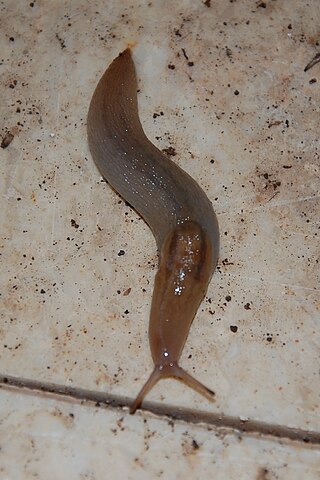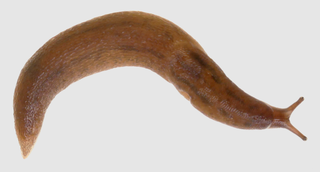| Ambigolimax nyctelius | |
|---|---|
| Scientific classification | |
| Domain: | Eukaryota |
| Kingdom: | Animalia |
| Phylum: | Mollusca |
| Class: | Gastropoda |
| Order: | Stylommatophora |
| Superfamily: | Limacoidea |
| Family: | Limacidae |
| Genus: | Ambigolimax |
| Species: | A. nyctelius |
| Binomial name | |
| Ambigolimax nyctelius (Bourguignat, 1861) | |
The name Ambigolimax nyctelius (and similarly Lehmannia nyctelia and Limax nyctelius) has been used to refer to several species of air-breathing land slugs (terrestrial pulmonate gastropod molluscs) in the family Limacidae. An article published in 2022 [1] revealed this confusion and furthermore showed that the original description applied to a slug species in a different family. The above names are therefore no longer appropriate and care is need to interpret the meaning of earlier usages. [2]
The following five species were confused: [1]
- Letourneuxia nyctelia (family Arionidae ) is the slug originally described. Until 2022 it was mostly known as Letourneuxia numidica; [3]
- Ambigolimax waterstoni is believed native in Algeria but has been reported also from South Africa, Australia, New Zealand, Elba and some Scottish botanic gardens; [4]
- Ambigolimax parvipenis is a widespread invasive species in the British Isles and California, and has been reported also from Spain, France, Greece and Arizona; [5]
- Lehmannia carpatica occurs mostly at high altitudes along the chain of the Carpathian Mountains and in other ranges further south from Albania to Bulgaria; [6]
- Simroth and Pollonera used the species name nyctelia for a poorly known species from North Africa attributed to the genus Malacolimax . [7] [8]






